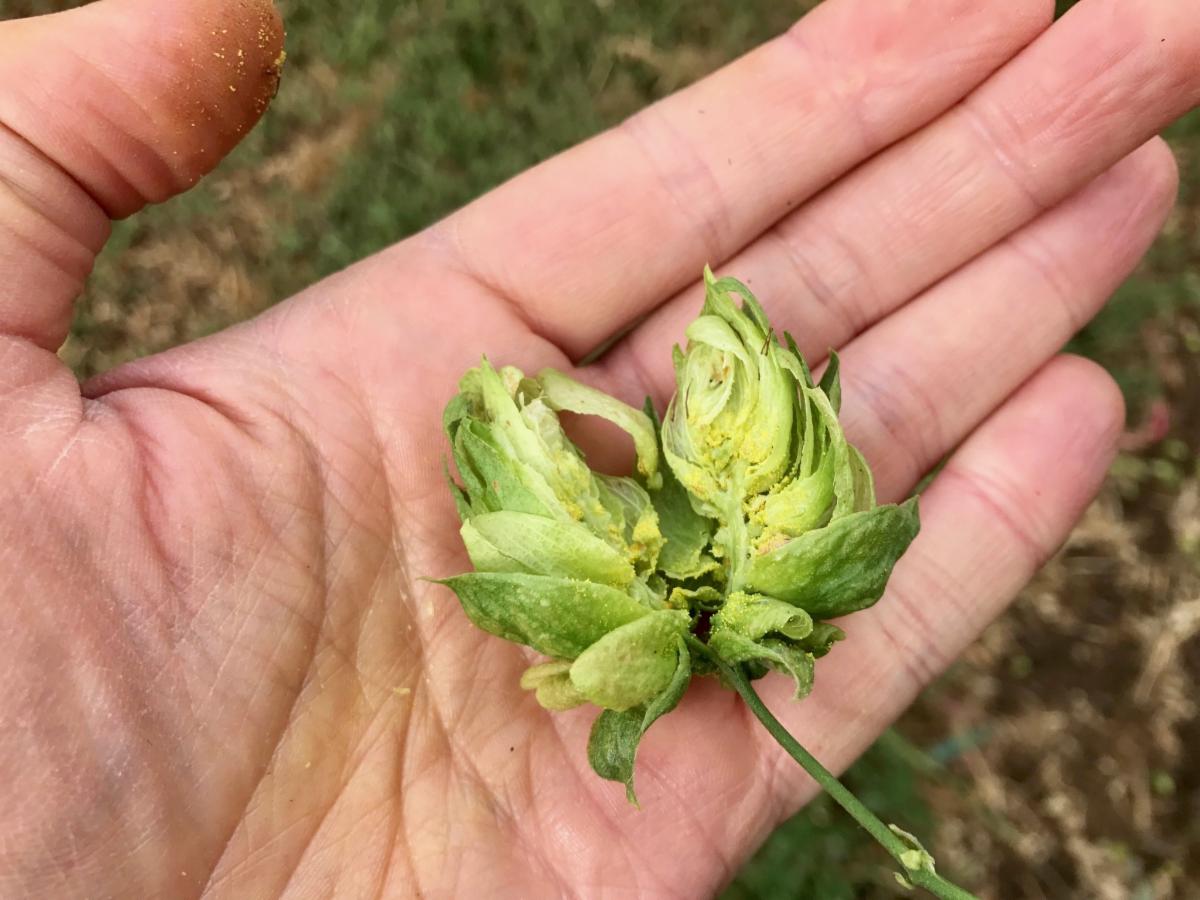Picking Apart the Hop: Fuggle
Water. Malt. Yeast. And hops.
The four ingredients that make up our favorite beverage – beer!
In this booming craft beer economy, it’s clear that there are an unlimited number of combinations of these four ingredients (plus or minus a few kettle additions) that create a plethora of styles and flavors. In part, this is due to the variety of hops available to brewers.
As Summit Brewing fans, we don’t have to tell you that the ingredients matter. Just as with any of the other three ingredients, the varietal and quality of hops, as well as the method in which they are used, is integral in creating the flavor profile of each of our brews.
But, sometimes consumers don’t always know what flavors are attributed to which kind of hop.
So, we’re here to break that down.
 But First, A Little Background
But First, A Little Background
Hops are the flower, or cone, of the female hop plant – humulus lupulus. They contain alpha acids and essential oils that bring bitterness, flavor and stability to beer. Their flavor can range from fruity to floral to funky.
They are generally separated into two categories: bittering and aroma.
Hops used primarily for bittering generally have higher alpha acids and are added during the beginning of the boil stage, as it takes a long time to release these flavors. The increased time at high temperatures tends to lead to a higher conversion rate of the hop alpha acids to isomerized alpha acids, thus providing a more efficient bitter in the final beer.
Hops used for aromatics generally have more essential oils and are added later in the brew, so the oils don’t boil off. Hops added just for flavor are added in between the two.
As with many plants, each variety of hop varies in flavor, aroma, bitterness and intensity level of any or all three of these characteristics.
 Make-Up of the Fuggle Hop
Make-Up of the Fuggle Hop
To start, we’re going to break down one of the hops in our flagship beer – fuggle.
Fuggle hops originate in Kent, England. According to several sources, its roots date back to 1860’s when it was first planted. The story goes that a woman helping to pick the Golding hops brought seeds home with her by happenstance. When emptying out her picking basket, the seeds took root in the soil, and once they grew she gave clippings to her nephew – Mr. Richard Fuggle. Fuggle took the seeds to his farm, which had varying soil than his aunt’s, and planted more. From then, alongside Golding hops, it quickly grew to be the dominant hop in the country.
While not considered a Golding variety, Fuggle is related to the Golding hop by one or two generations. They differ in the soil they prefer to grow in. Fuggle hops prosper in wet, cold, clay-ish soil. This gives them their distinct flavor.
According to Paul Corbett at Charles Faram Company, Fuggle and Goldings hops were the only available hops in the UK until the 1920’s when Professor Salmon at Wye College discovered Brewers Gold and Northern Brewer.
First used mainly for bittering, fuggle now is most commonly used for aromatics. This is because we now have Fuggle hops with higher alpha acids, and other higher alpha acid hop varieties, available, Corbett said. Fuggle is known for its earthy and woodsy characteristics. It brings the taste of bitter herbs, offers crisp freshness and has a mild fruit characteristic. It also happens to be a favorite of our head brewer Damian McConn.
McConn said Fuggle is often used in conjunction with its relative Goldings hop to create classic British hop character in pale beers. In stouts, its traditionally used for more bittering as it provides a great complement to roasted malts.
Fuggle can be found in Summit Extra Pale Ale, Summit Oatmeal Stout, Summit Winter Ale and Summit Great Northern Porter. In EPA, it brings earthy notes while also helping to accentuate the orange marmalade flavor. In Oatmeal Stout, Winter Ale and Great Northern Porter it brings soft, rich woodsy note that depends on the overall experience of the beers.
Another interesting note, Fuggle is the parent and grandparent hop to the Willamette, Citra, Cascade, Centennial, Chinhook and Glacier varieties. Cascade is also found in EPA and Oatmeal Stout.
Now knowing what to look for, see if you can pick out the fuggle in your next EPA!

(credit: Summit Brewing Co.)


Leave a Reply